| Weight | 1 lbs |
|---|---|
| Dimensions | 9 × 5 × 2 in |
| host | mouse |
| isotype | IgG |
| clonality | monoclonal |
| concentration | concentrate, predilute |
| applications | IHC |
| reactivity | human |
| available size | 0.1 mL, 0.5 mL, 1 mL concentrated, 7 mL prediluted |
rabbit anti-Glucagon monoclonal antibody (EP74) 6195
Price range: $160.00 through $528.00
Antibody summary
- Rabbit monoclonal to Glucagon
- Suitable for: Immunohistochemistry (formalin-fixed, paraffin-embedded tissues)
- Reacts with: Human
- Isotype:IgG
- Control: Normal pancreas
- Visualization: Cytoplasmic
- 0.1, 0.5, 1.0 mL concentrated, 7 mL prediluted
rabbit anti-Glucagon monoclonal antibody EP74 6195
| target relevance |
|---|
| Protein names Pro-glucagon [Cleaved into: Glicentin; Glicentin-related polypeptide (GRPP); Oxyntomodulin (OXM) (OXY); Glucagon; Glucagon-like peptide 1 (GLP-1) (Incretin hormone); Glucagon-like peptide 1(7-37) (GLP-1(7-37)); Glucagon-like peptide 1(7-36) (GLP-1(7-36)); Glucagon-like peptide 2 (GLP-2)] |
| Gene names GCG,GCG |
| Protein family Glucagon family |
| Mass 20909Da |
| Function FUNCTION: [Glucagon]: Plays a key role in glucose metabolism and homeostasis. Regulates blood glucose by increasing gluconeogenesis and decreasing glycolysis. A counterregulatory hormone of insulin, raises plasma glucose levels in response to insulin-induced hypoglycemia. Plays an important role in initiating and maintaining hyperglycemic conditions in diabetes. {ECO:0000305|PubMed:10605628, ECO:0000305|PubMed:12626323}.; FUNCTION: [Glucagon-like peptide 1]: Potent stimulator of glucose-dependent insulin release. Also stimulates insulin release in response to IL6 (PubMed:22037645). Plays important roles on gastric motility and the suppression of plasma glucagon levels. May be involved in the suppression of satiety and stimulation of glucose disposal in peripheral tissues, independent of the actions of insulin. Has growth-promoting activities on intestinal epithelium. May also regulate the hypothalamic pituitary axis (HPA) via effects on LH, TSH, CRH, oxytocin, and vasopressin secretion. Increases islet mass through stimulation of islet neogenesis and pancreatic beta cell proliferation. Inhibits beta cell apoptosis (Probable). {ECO:0000269|PubMed:22037645, ECO:0000305|PubMed:10605628, ECO:0000305|PubMed:12554744, ECO:0000305|PubMed:14719035}.; FUNCTION: [Glucagon-like peptide 2]: Stimulates intestinal growth and up-regulates villus height in the small intestine, concomitant with increased crypt cell proliferation and decreased enterocyte apoptosis. The gastrointestinal tract, from the stomach to the colon is the principal target for GLP-2 action. Plays a key role in nutrient homeostasis, enhancing nutrient assimilation through enhanced gastrointestinal function, as well as increasing nutrient disposal. Stimulates intestinal glucose transport and decreases mucosal permeability. {ECO:0000305|PubMed:10322410, ECO:0000305|PubMed:10605628, ECO:0000305|PubMed:12554744, ECO:0000305|PubMed:14719035}.; FUNCTION: [Oxyntomodulin]: Significantly reduces food intake. Inhibits gastric emptying in humans. Suppression of gastric emptying may lead to increased gastric distension, which may contribute to satiety by causing a sensation of fullness. {ECO:0000305|PubMed:10605628, ECO:0000305|PubMed:12554744}.; FUNCTION: [Glicentin]: May modulate gastric acid secretion and the gastro-pyloro-duodenal activity. May play an important role in intestinal mucosal growth in the early period of life. {ECO:0000305|PubMed:10605628, ECO:0000305|PubMed:12554744}. |
| Subellular location SUBCELLULAR LOCATION: Secreted {ECO:0000305}.; SUBCELLULAR LOCATION: [Glucagon-like peptide 1]: Secreted {ECO:0000269|PubMed:22037645}. |
| Tissues TISSUE SPECIFICITY: [Glucagon]: Secreted in the A cells of the islets of Langerhans. {ECO:0000269|PubMed:22037645}.; TISSUE SPECIFICITY: [Glucagon-like peptide 1]: Secreted in the A cells of the islets of Langerhans (PubMed:22037645). Secreted from enteroendocrine L cells throughout the gastrointestinal tract (PubMed:22037645). Also secreted in selected neurons in the brain. {ECO:0000269|PubMed:22037645}.; TISSUE SPECIFICITY: [Glucagon-like peptide 2]: Secreted from enteroendocrine cells throughout the gastrointestinal tract. Also secreted in selected neurons in the brain.; TISSUE SPECIFICITY: [Glicentin]: Secreted from enteroendocrine cells throughout the gastrointestinal tract.; TISSUE SPECIFICITY: [Oxyntomodulin]: Secreted from enteroendocrine cells throughout the gastrointestinal tract. |
| Post-translational modification PTM: Proglucagon is post-translationally processed in a tissue-specific manner in pancreatic A cells and intestinal L cells. In pancreatic A cells, the major bioactive hormone is glucagon cleaved by PCSK2/PC2. In the intestinal L cells PCSK1/PC1 liberates GLP-1, GLP-2, glicentin and oxyntomodulin. GLP-1 is further N-terminally truncated by post-translational processing in the intestinal L cells resulting in GLP-1(7-37) GLP-1-(7-36)amide. The C-terminal amidation is neither important for the metabolism of GLP-1 nor for its effects on the endocrine pancreas. {ECO:0000269|PubMed:12651102, ECO:0000269|PubMed:2753890, ECO:0000269|PubMed:9287128}. |
| Target Relevance information above includes information from UniProt accession: P01275 |
| The UniProt Consortium |
Data
 |
| Human pancreas stained with anti-Glucagon antibody using peroxidase-conjugate and DAB chromogen. Note the cytoplasmic staining of islet cells. |
Publications
| pmid | title | authors | citation |
|---|---|---|---|
| We haven't added any publications to our database yet. | |||
Protocols
| relevant to this product |
|---|
| IHC |
Documents
| # | SDS | Certificate | |
|---|---|---|---|
| Please enter your product and batch number here to retrieve product datasheet, SDS, and QC information. | |||
Only logged in customers who have purchased this product may leave a review.

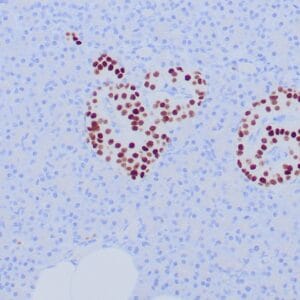
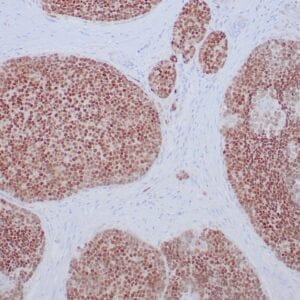


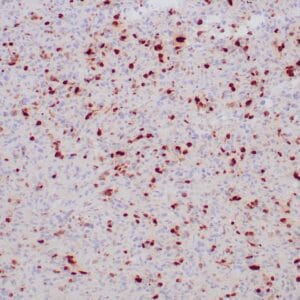

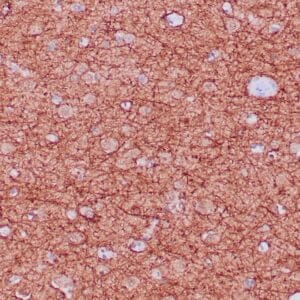
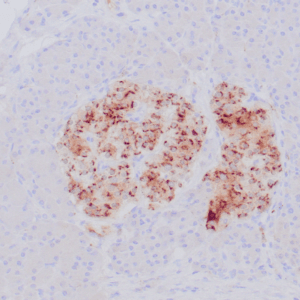
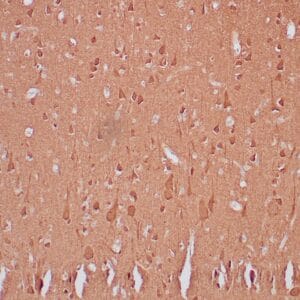



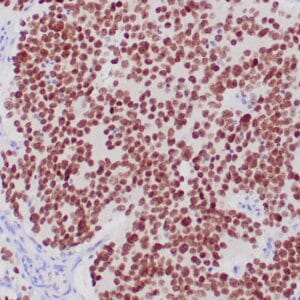
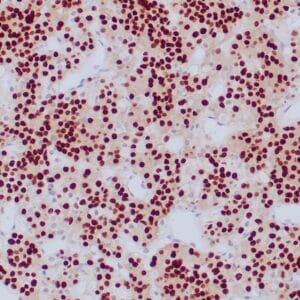
Reviews
There are no reviews yet.